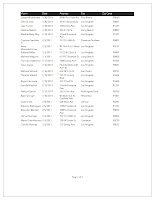1) China
2) India
3) United States
4) Indonesia
5) Russia
6) Brazil
7) Pakistan
8) Japan
9) Bangladesh
10) Nigeria
Open attribute table from cntry02 layer and change POP_CNTRY to sort descending. Answers are under sovereign
2) 15 rivers
Open attribute table from rivers layer and change system to sort ascending. Amazon rivers are listed.
3) Amu Darya: 52, Syr Darya: 37, total cities: 89
Open attribute table from river layer. Select the two cities. Navigate to Selection and Select by Location. Selection method is select features from and target layer is cities. Source layer is rivers and spatial selection method is features within a distance of source layer. Check apply a search distance, 500 km, then OK. Open attribute table from cities and print screen. Paste in paint because directly pasting on blog slows the computer. Save the images as JPEG and insert image here.
4) 452,300,000
Select by attributes. "CNTRY_NAME" = 'Iran'. Select by location. Target layer is cntry02. The source is cntry02. Spatial selection method within a distance 300 kilometers. Open attribute table from cntry02 layer. Show selected records. Unselect Iran. Look at sum in statistics on POP_CNTR.
5) Most populated: Ethiopia, Least populated: Vatican City
Open attribute table for country layer. Find landlocked and highlight it. Select by attributes. "Landlocked" = 'Y' Open attribute table again and sort descending. Find most and least populous countries.
6) Austria, Bosnia & Herzegovina, Croatia, Czech Republic, Poland, Romania, Slovakia, Slovenia, Yugoslavia.
Open attribute table of cities. Select Veszprem. Select by location. Target layer cntry02. Source layer cities. Spatial selection method is Target layer (s) features are within a distance of the Source layer feature. Apply a search distance 300 Kilometers. Everything else is default. Click OK. Then open attribute table of cntry02. Show selected records. Answers are listed and exclude Hungary.
7) Cameroon, Central African Republic, Libya, Niger. Nigeria, Sudan
Open attributes table from country layer. Highlight Chad. Select by location. Target layer: cntry02. Source layer: cntry02. Spatial selection method: Target layer features touch the boundary of the source layer feature. Everything else default. Click OK. Navigate to attribute table of country layer. Show selected records. Answers all listed and exclude Chad.
8) 1) Russia (97), 2) United States (93), 3) Thailand (72), 4) Turkey (67), 5) Cote d'Ivory and Poland (both 50)
Open Arctoolbox. Expand analysis tools. click on statistics and click frequency. Input table as cities and frequency field (s) as cntry_name. Click OK. A new table is created. Open new table. Sort frequency descending. Answers are listed.
9) 2950km + 211km + 599km = ~3760 km.
Open attribute table of country layer. Find and select Sudan. Use the measuring tool to measure in kilometers the three rivers on Sudan. Estimate the measurements and add the three together.
10) 1) Russia (1516), 2) Canada (1340), 3) United States (743), 4) China (219), 5) Sweden (168)
Same as #8 but input table should be lakes. Use the same frequency tool and choose cntry_name as frequency_field. Click Ok. A new table is created. Open new table. Sort frequency descending. Answers are listed.
11) 1) Canada (443517.19 sq km), 2) United States (196848.52 sq km), Russia (138250.78 sq km), Kazakhstan (70899.672 sq km), 5) Tanzania, United Republic of (53529.613 sq km)
Open attribute table for lakes and go to table options and add field. Name the field. Type should be long integer. Calculate Geometry for the new Area field. Change units to square meters. Under geoprocessing, choose dissolve tool. Input features as lakes. and dissolve_field(s) as cntry_name. Click OK. A dissolved layer will be created. Open attribute table from new dissolved layer. Add new field as before. Name the new field. Type is float to get decimal. change units to square kilometers. Sort descending. Answers are listed.
12)
Open attribute table from dissolved lakes. Navigate to join and relate. Join country layer with the lake dissolves layer. add a new field. Name the field. Use field calculator and find lake dissolves area/ pop_cntry. Edit symbology by changing color ramp and reclassifying the values.











